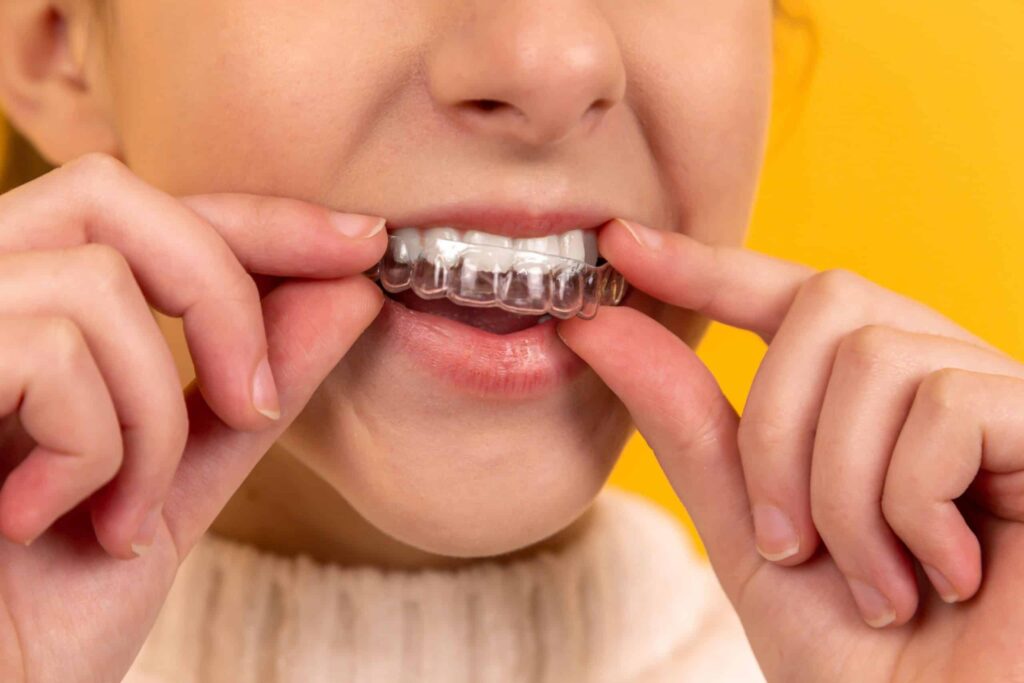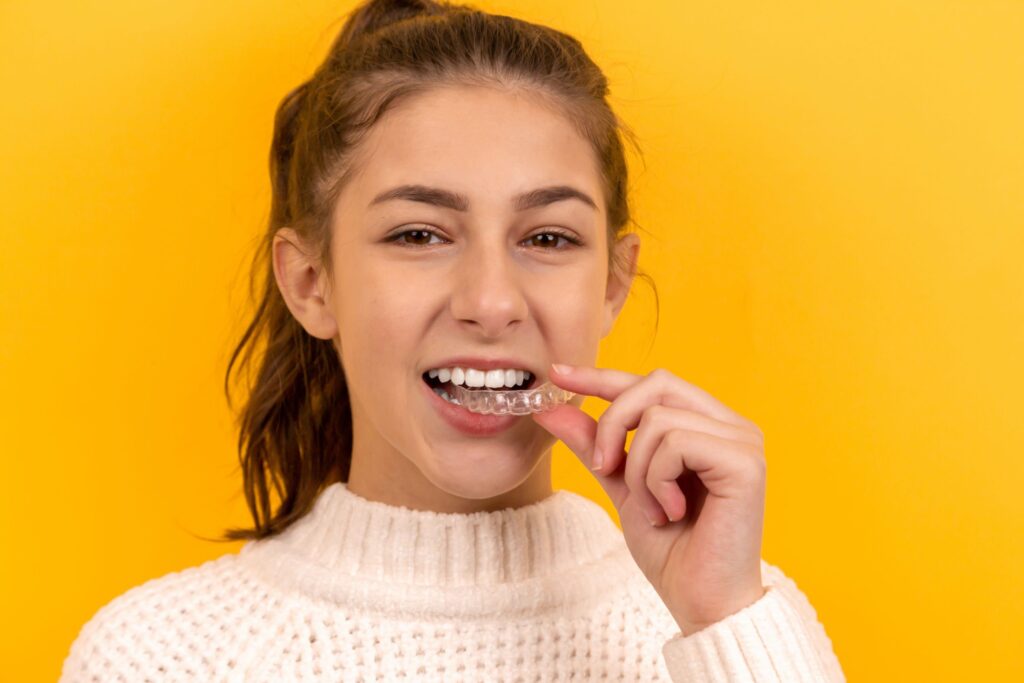
Clear aligners have revolutionized the field of orthodontics, offering an innovative and discreet way to straighten teeth without using traditional metal braces. But can clear aligners fix overbites and other bite problems?
Overbite Explained
An overbite is usually a condition in which the upper front teeth overlap the lower front teeth vertically. In other words, when a person with an overbite closes their mouth, the upper front teeth cover a significant portion of the lower front teeth. This can cause the lower teeth to bite into the roof of the mouth and sometimes result in the lower teeth hitting the back of the upper teeth.
An overbite can result from many factors, including genetics, thumb-sucking during childhood, or a mismatch in the size of the upper and lower jawbones. Some people may also develop an overbite due to habits such as nail-biting or chewing on pens, which can cause the upper front teeth to move forward and the lower front teeth to move backward.
In some cases, an overbite may not cause any issues, and the individual may not even be aware that they have one. However, if the overbite is severe, it can lead to several dental problems. For example, it may cause excessive wear on the teeth, gum irritation, and even difficulty speaking and eating. Overbites can also cause aesthetic concerns, as the upper teeth may appear excessively prominent, while the lower teeth may appear small or recessed.
Can Clear Aligners Correct Overbites?
Clear aligners are an effective treatment alternative for correcting overbites, as they can gradually shift the position of the teeth and jaws to achieve a more harmonious bite.
During treatment, the clear aligners will apply gentle pressure to the teeth, gradually moving them into the desired position. The aligners must be changed every two weeks or so to ensure that the teeth continue moving in the right direction.
In some cases, additional appliances such as rubber bands may be required to correct more severe overbites. Your orthodontist will be able to assess your individual needs and determine the best course of treatment for your specific case.
What Other Bite Problems Can Clear Aligners Fix?
In addition to overbites, clear aligners can also correct a range of other bite issues, including:
Underbites
An underbite usually occurs when the lower jaw protrudes beyond the upper jaw, causing the lower teeth to overlap the upper teeth. Clear aligners can help to systematically shift the position of the teeth and jaws to correct this bite issue.
Crossbites
A crossbite occurs when the upper and lower teeth do not align correctly. This can cause uneven wear on the teeth and lead to jaw pain and discomfort. Clear aligners can help to align the teeth and jaws and achieve a more balanced bite.
Open bites
An open bite occurs when the upper and lower teeth do not meet when the mouth is closed. This can cause difficulty chewing and speaking, as well as aesthetic concerns. Clear aligners can help to close the open bite and achieve a more functional and attractive smile.
Crowded teeth
Crowded teeth occur when there’s insufficient space in the mouth for all the teeth to fit comfortably. This can cause the teeth to overlap and become crooked, leading to difficulty cleaning the teeth and an increased risk of tooth decay and gum disease. Clear aligners can gradually shift the position of the teeth and create more space in the mouth.
Benefits of Clear Aligners for Bite Problems
As your orthodontist in Redwood City will tell you, clear aligners offer several benefits for correcting bite issues, including:
- Improved Oral Hygiene. Traditional braces are notoriously difficult to clean and maintain, making it challenging to maintain good oral hygiene. On the other hand, clear aligners are removable, making it easy to brush and floss as you normally would. With clear aligners, you can maintain good oral hygiene, reducing the risk of tooth decay, gum disease, and other oral health problems.
- Increased Comfort. Traditional braces use brackets and wires, which can irritate the mouth and cause discomfort. On the contrary, clear aligners are made of smooth, comfortable plastic, making them much more comfortable to wear.
- Effective Treatment. Clear aligners are just as effective as traditional braces when it comes to correcting bite problems. They are particularly effective for mild to moderate cases of misaligned teeth and bite problems. However, severe cases may require traditional braces or other orthodontic treatments.
- Aesthetically Pleasing. Clear aligners are discreet, making them an excellent option for anyone concerned about the appearance of traditional braces. This is particularly important for adults and teenagers who may feel self-conscious about wearing braces.
- Convenience. Clear aligners are removable, making them much more convenient than traditional braces. You can remove them when eating, brushing, and flossing and put them back in when you’re done. This makes it easy to maintain good oral hygiene and enjoy your favorite foods without worrying about damaging your braces.
- Fewer office visits – Clear aligners typically require fewer office visits than traditional braces, as no wires or brackets need to be adjusted.
Final Thoughts
Clear aligners can be an effective alternative for fixing overbites and other bite problems, but it’s important to consult the best dentist in Redwood City to determine if they’re the best option for your specific case. You should also be prepared to commit to the treatment plan and follow all instructions carefully for the best results. Remember, you must wear the aligners for at least 22 hours a day and be diligent about switching out each tray every two weeks.


